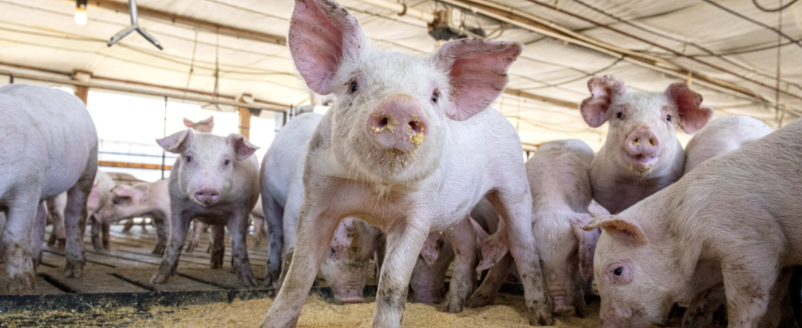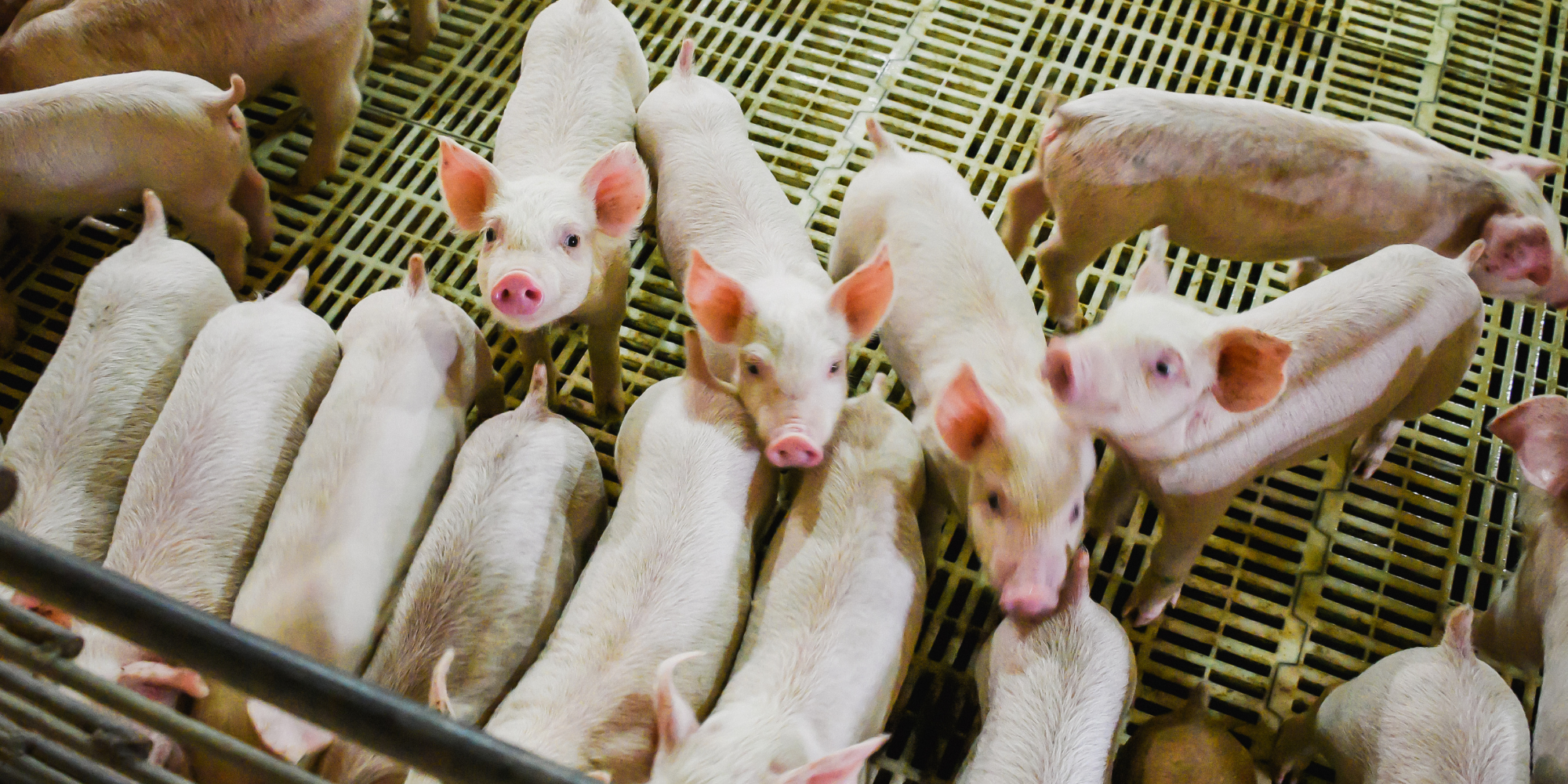Kylie Scott, graduate student at West Texas A&M University and 2021 College Aggies Online participant, shares what she’s learned about common choices and practices in modern pig housing. To read the original post, click here.
As a high school livestock shower in the National FFA Organization, every year I would pack up my brushes, animal feed, and other supplies at 6:00 AM to head to the county show. Whilst there, it’s incredible to see the interactions between community members and their local agriculture. It was always a great opportunity for the students to showcase the hundreds of hours of work they invested into their animals.
But there is an omnipresent opportunity at each local county show like this that is lost on many community members: the opportunity to ask questions, learn about how the animal was raised, and to support these kids by purchasing locally-grown meat on the spot. Common questions I would hear regarding pork production on the farm were: How are the pigs housed? Are they able to interact with other pigs? Can they exhibit natural behaviors? Why are sows sometimes put into tiny stalls? Well, let’s dive in and look at the facts.

HOW ARE PIGS HOUSED ON A ‘STANDARD’ FARM?
To the unsatisfied ears of many consumers when hoping for a simple answer, the fact is that it depends on the operation. Every pig farm is different in how they select their housing, which is highly dependent on location, objectives of the farm, space, legal requirements, and number of pigs. A grand majority of farms host infrastructure to accommodate a form of group housing, which are often concrete and fully-slated pens designed to hold a designated number of pigs. These group pens have round-the-clock access to food and water and pigs are able to move freely to interact with their pen-mates. When housed in group pens, these pigs are able to eat, sleep, play, and naturally establish a hierarchical order with their counterparts. Pigs are highly-intelligent and social animals, which is why they will often sleep up against one another at night for comfort and protection. Fact: No one likes to live in a mess–not even the pigs! Pigs are actually very clean animals and will prevent themselves from getting too dirty if they can help it. Farmers will clean their pens, feeders, and barns regularly to maintain a safe and healthy environment for their animals.
Many of you are probably wondering– what about the mother pigs (known as sows) and their piglets? Well, I am glad you asked! Farms that specialize in breeding are heavily regulated in maintaining a healthy environment for the mothers. Specialized nutritionists, veterinarians, and (of course!) the farmers work tirelessly to monitor health during the course of the gestation, which is 12 weeks, 12 days, and 12 hours! Sows can be occasionally housed in small groups with other pregnant sows, but oftentimes these hormonal ladies act aggressively towards one another in the fight for dominance and badly injure one another. Therefore, it is common that sows are held in individual housing systems to monitor each individual’s health and wellness.

“Pregnant sows require individualized care throughout their gestation period. Sows have special nutrition requirements and need daily monitoring and evaluation.”
-Pork Checkoff
THE SPECIAL TREATMENT
In the individual pens for pregnant sows, a bit of this freedom is exchanged for the health and safety of the pigs. Also known as a gestation stall, there is typically only enough room to stand up and lie down comfortably. Additionally, these stalls restrict foraging behavior, limit movement and exercise, and minimize interaction with other sows. On the other hand, this individual system greatly reduces worker and animal injuries and lessens competition for resources between sows. It also allows the all-star swine team (nutritionist, veterinarian, and farmer) to monitor body condition and specialize a feeding regimen, which is tailored to the sow’s individual nutritional management. Once the piglets are born, a similar system is used to prevent the clumsy mothers from accidentally laying on the babies by allowing a slat under the pen large enough for piglets to slip under and roam around. There are a plethora of resources available to pig farmers when deciding the best choices and designs for sow housing, and you can rest assured animal welfare is at the forefront of these priorities. Pork Checkoff has posted a variety of studies that incorporate genetics, production flow, disease management, and nutritional considerations into the design of group and individual sow housing systems.
This year, as a college graduate, I went instead to see the Texas State Fair, which never has a lack of young leaders preparing their pigs for the big livestock show and auction. As I watched all the pigs being prepped for their big moment, I saw the young handlers hugging their potbellied friends with tears in their eyes. After the months of early mornings and late nights bonding, feeding, cleaning, exercising, and overall, caring for what they know is their passion, they know it was all worth it to feed their community. Check out the short video posted by Pork Cares below which highlights the operation of Karla Dorale of Charter Oak, Iowa as she describes why she does what she does every day.
Want more information? Check out the following reputable websites on pork production and management, food safety, safe pig care, and much more by clicking the following links: PorkCheckoff.org , Pork Cares.org , Pork.org
All posts are the opinion of the author and do not necessarily represent the view of the Animal Ag Alliance.







